The Best Deals on Camping, Backpacking and Outdoor Gear [June 2025]
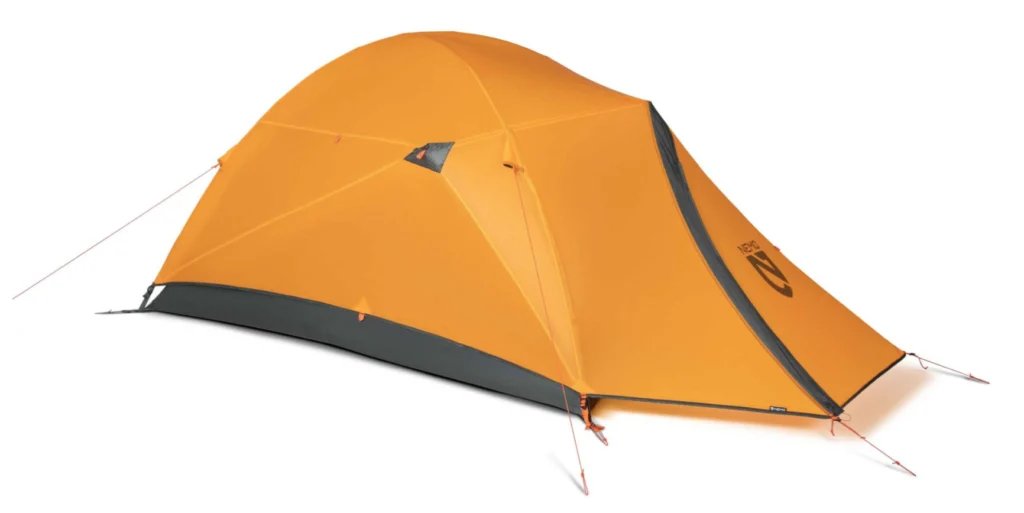
Snow, wind, sub-freezing temperatures…it’s enough to turn most people off to winter camping. Add to that the high prices of 4-season tents (also called expedition tents), and a whole new group of potential campers fall out of the running. But if you want to go camping or backpacking in the colder months and reap all the benefits of recreating during the fourth season (empty trails, peace and quiet, animal encounters…), we’ve got good news: there are plenty of tents for winter camping out there with price tags that don’t include commas.
In fact, you don’t even need an extra special tent to enjoy winter backpacking. Many (but certainly not all) 3-season tents will do just fine. I say not all, because our favorite backpacking tent, the Big Agnes Tiger Wall 2, is a 3-season tent not suitable for cold weather camping. After all, three quarters of the dang thing is mesh, and that simply won’t do when there’s frost (or snow) on the ground. So what do you need to look for when searching for tents for winter camping? And what tents do we think will do the job nicely? Keep reading, son!
What’s the Difference Between a 3-Season Tent and a 4-Season Tent?
In a nutshell, a 4-season tent is going to be sturdier than a 3-season tent. The materials will be thicker and heavier and the poles will be sturdier. That’s because 4-season tents are designed to–quite literally–weather winter storms. You may also notice these tents called by other names: expedition, alpine, even mountaineering tents. But they’re all designed to perform in extreme winter conditions like snow, wind, sub-zero temperatures, even alpine storms.
How do you know when you need a 4-season tent or a 3-season tent? If you won’t be camping on any exposed ridges, mountainsides, or aren’t expecting serious winter storms, a 3-season tent will likely do. Basically, if you’re camping where there are still trees growing and it’s not supposed to snow tons overnight, save your money and a few pounds and go with the 3-season tent.
What to Look for in a 3-Season Tent for Winter Camping
But as I mentioned, not every 3-season tent will do for winter backpacking. Not all models are created equal. So here’s what to look for when you’re on the hunt for the right gear:
- A tent with little to no mesh or, if there is mesh on windows and doors, those spots should be able to be sealed shut (mesh = cold)
- A non ultralight tent (ultralight = not super sturdy or warm)
- A tent with extra space inside for storing gear (more space = less stuff left out in the cold to freeze)
Locate a tent that has all of the above and you’re golden.
Tents for Winter Camping
So what options are out there that make great tents for winter camping and backpacking? We rounded up a few so you can stock your gear closet with confidence. (Note that these tents are all geared more toward trekking and backpacking as opposed to car camping. They will also do for car camping, but feel free to go with something larger and heavier if you’ll mainly be using it for car camping. These are designed to be packed and carried for use in the backcountry.)
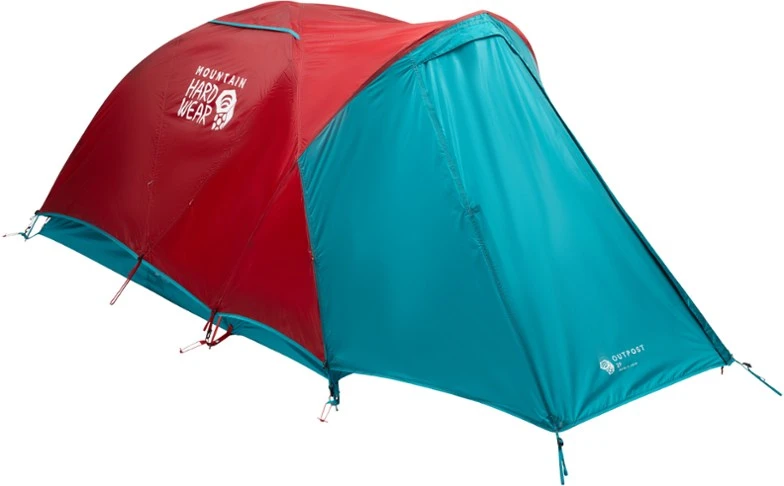
Mountain Hardwear Outpost
A true 3-season tent that’s still perfect for winter backpacking, the Mountain Hardwear Outpost only comes in a 2-person size, but is built well for cold-weather adventures. Minimal mesh toward the top means less heat can escape and a super spacious vestibule offers more usable space over one door while another more compact vestibule covers the door on the other end. It rolls in at just under 6 lbs. and $600. Find it on REI and Moosejaw.

Nemo Kunai
A 3-4-season tent, the Nemo Kunai weighs just under 4 lbs. and costs about $500. But with mesh doors that can be sealed up for warmth, it transitions seamlessly from three season to four without as much of the extra weight. There is only one door, though, and the vestibule isn’t huge, but it’s a well-designed tent that isn’t overkill for use during the other three seasons (and it’s one of the lightest on this list!). Find it on Backcountry and nemoequipment.com.
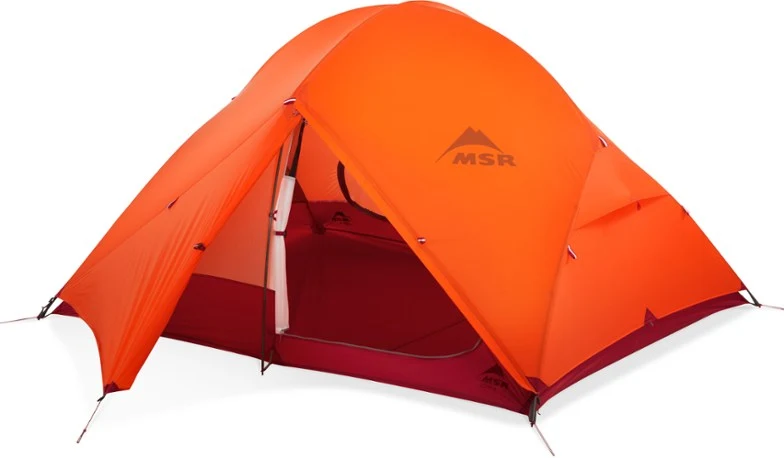
MSR Access
The MSR Access comes in 1-person and 3-person versions so you can keep it tight or spread out and store all your gear. It bridges the gap between 3- and 4-season tents, which means it’s sturdier than many 3-season tents but not quite as serious as a full-on 4-season tent for winter camping and backpacking. It has small mesh vents that are high up on the 2 doors to prevent condensation build-up and still squeezes in at just about 5 lbs. It is on the costlier side, though, at $500 (for the 1-person) and $600 (for the 3-person). Find the MSR Access on REI and Moosejaw.
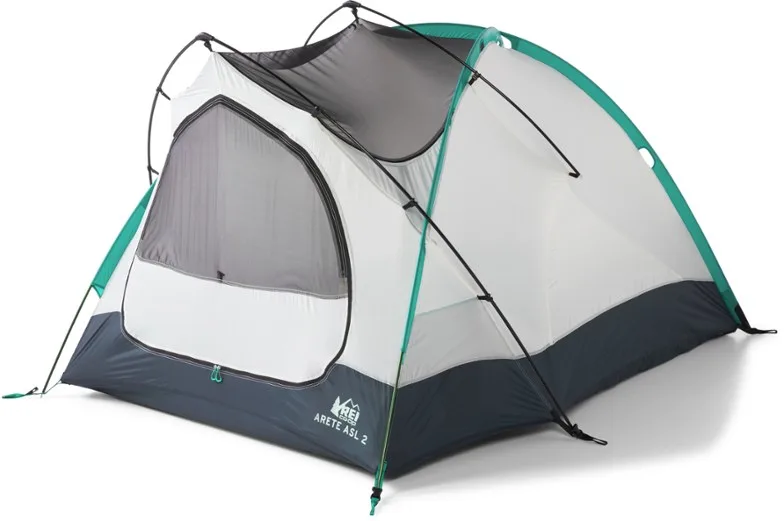
REI Co-op Arete ASL
Looking for a solid 2-person tent that walks the line between a 3-season and 4-season tent? the REI Co-op Arete ASL is your tent. At just under $400, it has fully sealable mesh vents on top and on the single door and it weighs in at just over 6 lbs. Plus, it contains some Bluesign Approved materials, making it more sustainable than others. It’s sturdy, offers a fair amount of headspace, and, in our opinion, looks good doing it. Find it on REI.
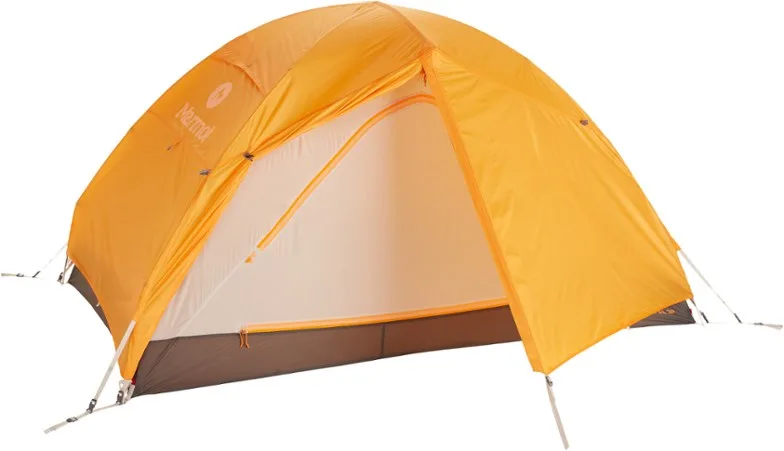
Marmot Fortress UL
In this case, UL (or ultralight) is alright. Mainly because this tent isn’t that ultralight. It’s just under 6 lbs. and is in the $400-$520 price range (depending on size), which isn’t bad for a 3+season tent. The two mesh doors are sealable so you can block out the cold or you can un-zip them to let a light breeze through on warmer expeditions. Plus, it’s available in a 2-person and 3-person version. Find it on REI and Moosejaw.
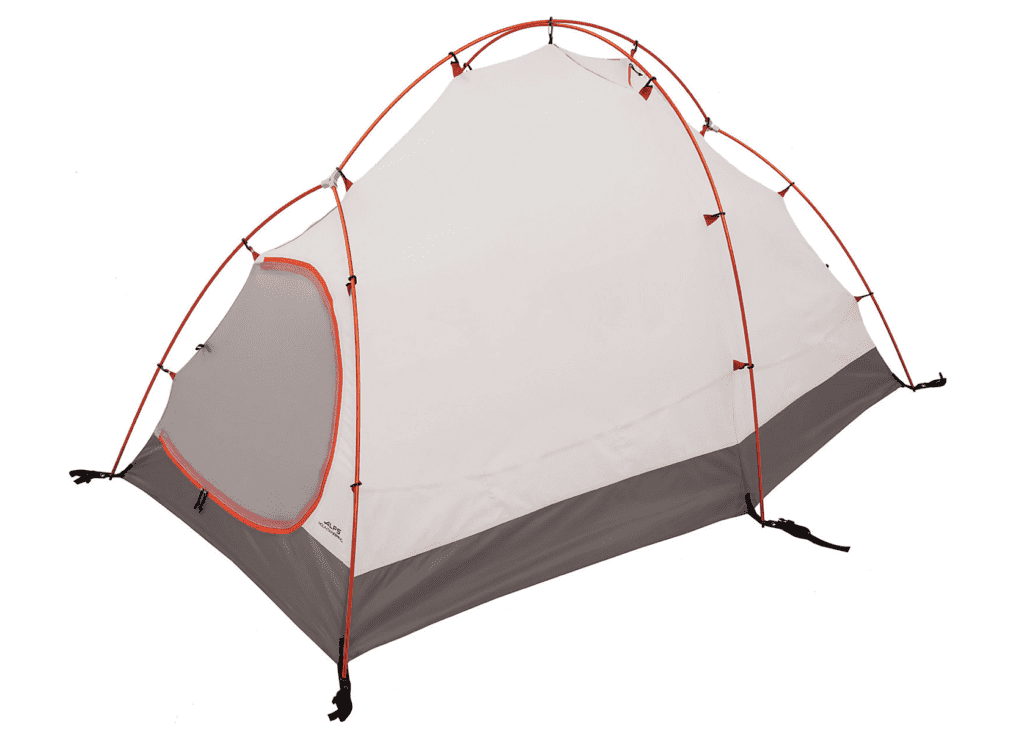
ALPS Mountaineering Tasmanian: The budget-friendly option
A four-season tent that clocks in under $300? Yes, please! The ALPS Mountaineering Tasmanian only has one door–always a bummer on a 2-person tent IMO–but that mesh door completely seals up so you can stay all toasty inside when backpacking in the winter. It has a nice long, roomy vestibule for extra storage space and domed top for more headroom when you’re sitting upright, making it a solid choice for winter camping. The downside: it weighs a hefty 8 lbs. Find it on Moosejaw.
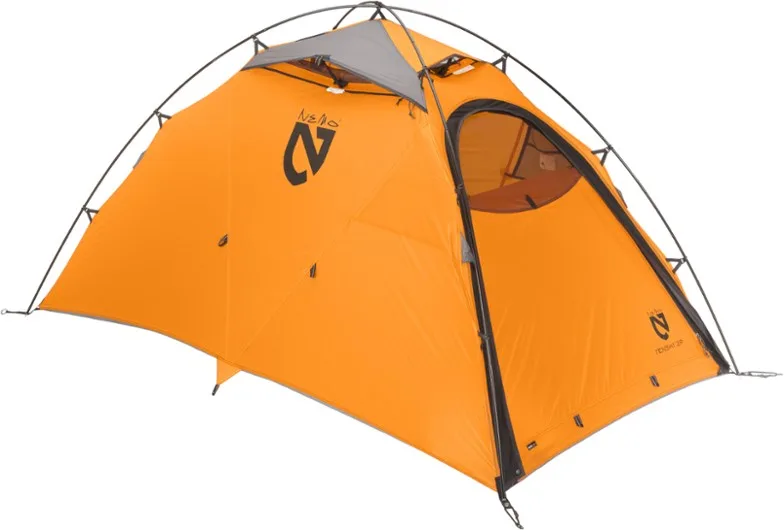
Nemo Tenshi
It’s not a cheap 2-person tent at $700, but it is a winter backpacking beast. Condensation curtains keep moisture to a minimum, small vents promote circulation, and an external clip-in point offers extra piece of mind if you’re pitching this bad boy on narrow ledges and want to attach it to an anchor point on a rock wall or around a sturdy tree. It’s just under 6 lbs., but has the added benefit of a vestibule that’s nearly the size of the tent floor! Find it on REI and Nemoequipment.com.
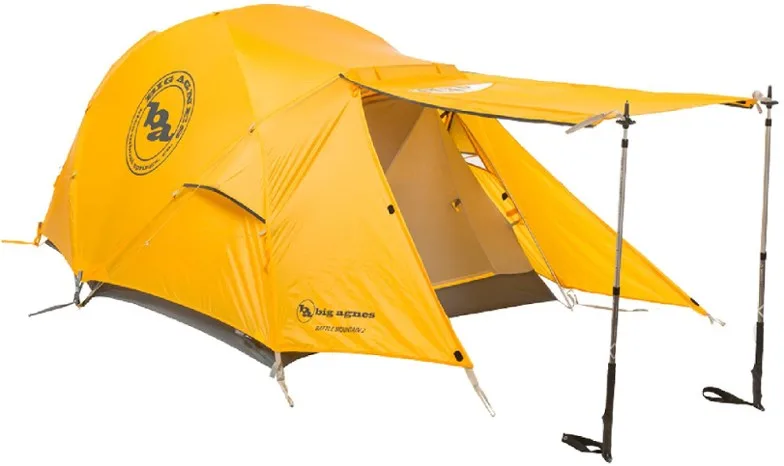
Big Agnes Battle Mountain
The Big Agnes Battle Mountain is just as intense as it sounds (and looks). Its spacious dome-shaped interior offers plenty of room to move around and the vestibule can even be unzipped and propped up with two trekking poles to transform it into an awning for easy access (while still offering cover). It is neither cheap nor light at 7.5 lbs. and $700 (2-person), but it’s quite unlike anything in its class and can weather all kinds of winter backpacking conditions. Find the 2-person tent and 3-person tent on REI and Moosejaw.
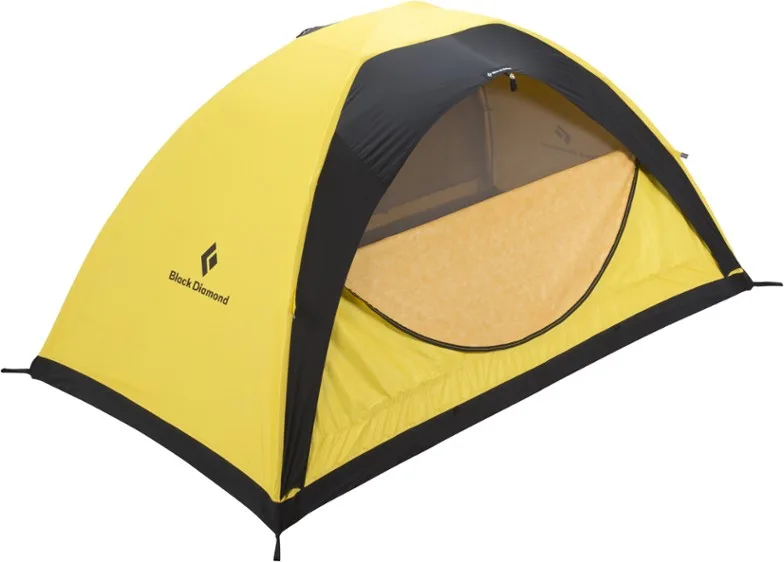
Black Diamond Ahwahnee
Black Diamond 4-season winter backpacking tents are unique in that they don’t often involve a rain-fly. The Ahwahnee 2-person tent is no different. It means no vestibule (unless you buy it separately), but the single-wall tent fabric is sturdy and designed to withstand serious winter weather. Internal poles mean easy setup and the whole package weighs just under 7 lbs. It usually costs in the ballpark of $800. Find the Ahwahnee on REI and Moosejaw.
•
That enough tents for winter camping and backpacking for you? You ready to gear up and get out there? See if you can save a few bucks by checking out which online retailers and brands are offering deals on outdoor gear this week or check out the epic Black Friday sales on outdoor gear happening now! Now get out there and wander on!
•
*This post contains affiliate links, which means when you get a dope new tent after clicking on one of those links, we may receive a small percentage of the sale, which helps keep the lights on here at Terradrift. Thanks a million for supporting us.
